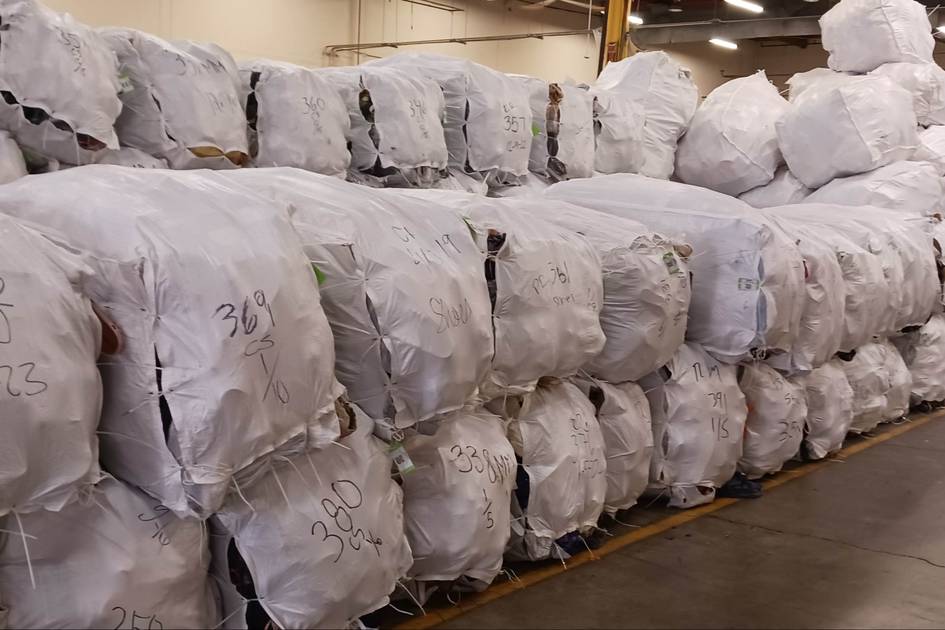How 90% of US Second-Hand Imports Find New Life in Guatemala

The global secondhand clothing market often faces criticism due to the textile waste imported from developed nations. This influx has considerably affected countries like Ghana, Kenya, Uganda, and Nigeria. According to Bank & Vogue, many of these nations lack the infrastructure to process the significant amounts of used clothing that come in, leading to overflowing landfills. This situation results in environmental pollution and poses challenges to local textile and apparel industries.
However, a recent report from Garson & Shaw, a prominent global wholesaler of used clothing, reveals a different narrative for Guatemala. It states that almost 90 percent of the imported clothing is not discarded but is repurposed domestically. This challenges existing beliefs about textile waste dumping while also shedding light on innovative recycling solutions for items deemed non-reusable.
Insights into Secondhand Clothing Imports in Guatemala
The report highlights that an astonishing 98.6 percent of secondhand clothing brought into Guatemala in 2023 was sourced from the United States. This amounts to over 131 million kilograms of apparel, making the US Guatemala’s principal supplier and establishing the country as one of Central America’s largest used clothing markets. This situation emphasizes the importance of cross-border supply chains in promoting recycling and a circular economy.
Guatemala’s secondhand clothing market functions through both formal and informal channels. Megapaca, the country’s largest formal retailer, employs more than 4,100 people and runs nationwide operations. In addition to this, an extensive informal economy has developed around the used clothing trade, involving market traders, micro-retailers, and street vendors responsible for final distribution.
Supporting Local Economies and Employment
Used clothing imports generally come in the form of unsorted ‘ropa cruda’ bales, which local businesses are eager to work with to manage their sorting operations. These bales enable stakeholders to engage in local sorting, grading, and pricing, fostering value in the Guatemalan economy. “Secondhand clothing shipped to Guatemala goes through multiple layers of value extraction by local sorters, retailers, and vendors,” noted Jennifer Wang, the founder of Full Cycle Resource and lead author of the report. “In fact, 88 to 92 percent of clothing is sorted for reuse, making local sorting both valuable and essential.”
Pricing in informal markets varies significantly; lower-grade garments can cost as little as 0.13 USD, while higher-quality pieces can fetch up to 6.48 USD, indicating a potentially lucrative trade. Moreover, imported clothing typically undergoes a two-stage sorting process, which involves removing non-reusable items and separating accessories and shoes, followed by thorough quality grading. Waste rates for sorted imports are around 5 percent, in stark contrast to the 12.2 percent for unsorted clothing, highlighting the critical role of sorting in efficient waste management.
Empowering Women Through Secondhand Clothing
Another important finding from the report is the role of the secondhand clothing market in bolstering women’s economic participation in Guatemala. A survey of 382 traders revealed that 60.7 percent were women, with 57.4 percent of secondhand clothing businesses owned by females, which is more than double the national average for women leaders. Additionally, 94.2 percent of those surveyed reported better household finances, empowering women within their families. The gender wage gap in this sector stands at 17 percent, which is an improvement compared to national averages.
Despite these advancements, the overall waste management infrastructure in Guatemala remains underdeveloped, with a collection rate of about 55 percent and no specific tracking for textile waste. Nevertheless, waste from the secondhand clothing sector constitutes a minor portion of total waste and is managed more efficiently than many other waste streams.
This report is crucial, as it reframes the discussion from waste to opportunity,” stated Lisa Jepsen, CEO of Garson & Shaw. “It provides solid evidence that global reuse systems offer not just environmental benefits, but also economic and social advantages. We need to incorporate international reuse efforts into US waste and circular economy policies.”
How do you think the secondhand clothing market can further drive positive change in Guatemala and similar regions?




